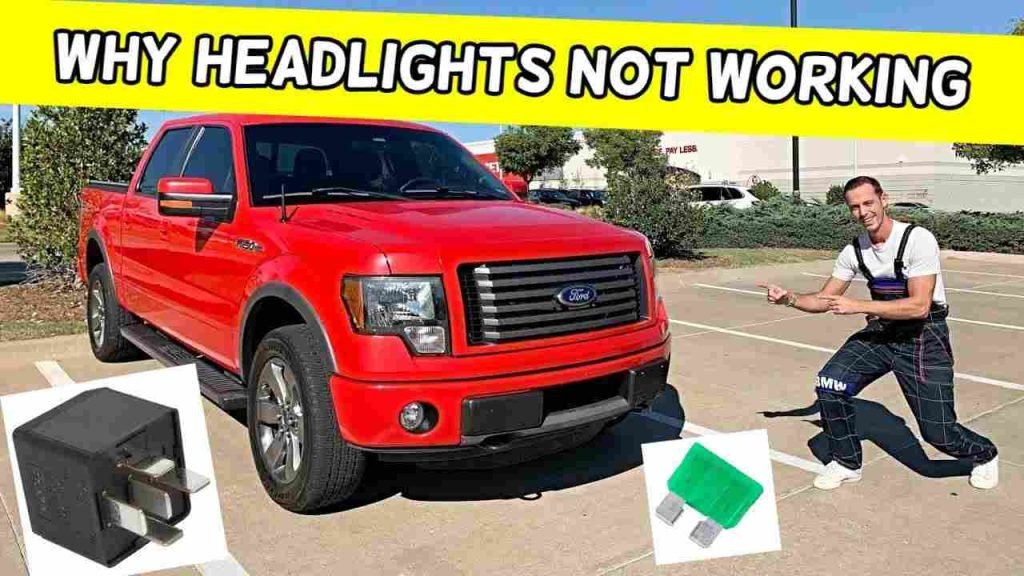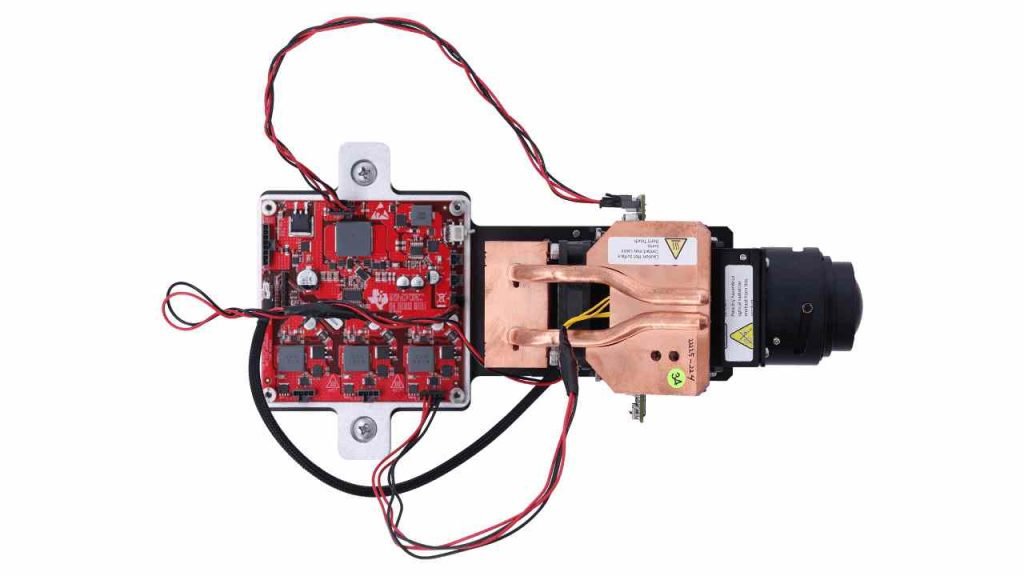When your truck’s headlights aren’t working, it can be both frustrating and dangerous, especially if you’re driving at night or in poor visibility conditions. Headlights are crucial for safe driving, so addressing the issue promptly is important. Before you panic, start by checking the basics: ensure the bulbs are properly installed and haven’t burned out. Next, inspect the fuses and relays associated with the headlights to see if they need replacing. If these simple fixes don’t solve the problem, it may be time to look at the wiring or headlight switch. In this guide, we will explore common causes of headlight failures and provide steps to diagnose and resolve the issue effectively along with the help of Go-go Logistics & Transport.

Sometimes, the issue could be more complex, such as a malfunctioning headlight control module. It’s also worth checking for any loose connections or damaged wiring that could be contributing to the problem. Taking these steps will help you diagnose and fix the problem efficiently, ensuring that your headlights are working properly for safe driving. If you’re unsure about handling electrical components or if the issue persists, seeking professional truck electrical repair services might be necessary. These experts can provide a thorough diagnosis and address any underlying electrical issues to restore your headlights to optimal condition.
Check the Headlight Bulbs
The first step when your truck’s headlights aren’t working is to check the bulbs. Headlight bulbs can burn out over time, leading to a loss of illumination. Inspect the bulbs to see if they are damaged or have burned out completely. If the filament inside is broken or the bulb appears blackened, it likely needs replacing. Ensure that the bulbs are properly seated in their sockets and that the connections are secure. Replacing faulty bulbs is a straightforward fix that often resolves headlight issues. Additionally, consider upgrading to LED headlights, which offer brighter and more efficient lighting. Make sure to use the correct type of bulb as specified by your vehicle’s manufacturer to avoid further problems.
Inspect the Fuses and Relays
Fuses and relays play a crucial role in powering your truck’s headlights. If the headlights are not working, a blown fuse or faulty relay could be the cause. Locate the fuse box and check the headlight fuses for any signs of damage or burning. Replace any blown fuses with ones of the same rating. Similarly, test the relays to ensure they are functioning correctly. Relays can sometimes fail, disrupting the electrical flow to the headlights. Inspecting and replacing these components is essential for restoring headlight functionality and ensuring the electrical system operates smoothly.
Examine the Headlight Switch
The headlight switch controls the operation of your truck’s headlights. If the headlights aren’t working, the switch might be faulty. Check the switch for any signs of wear or damage and ensure it’s properly aligned. Turn the switch on and off, listening for any clicks or unusual sounds that could indicate internal problems. If the switch is not functioning correctly, it may need to be replaced. A malfunctioning headlight switch can prevent the headlights from turning on or off as needed. Replacing a faulty switch will help restore proper headlight operation and ensure safe driving conditions.
Test the Headlight Wiring
Headlight wiring issues can lead to malfunctioning lights. Inspect the wiring connected to the headlights for any visible damage, fraying, or loose connections. Corroded or damaged wires can disrupt the electrical flow and cause the headlights to fail. Use a multimeter to test the continuity of the wiring and ensure that voltage is reaching the headlights. Repair or replace any damaged wiring to restore proper function. Proper wiring is crucial for ensuring that the headlights receive the necessary power to operate correctly and reliably, so addressing wiring issues promptly is essential.
Evaluate the Headlight Control Module
The headlight control module manages the electrical signals sent to the headlights. If the module is malfunctioning, it can cause issues with the headlights. Check the control module for any signs of damage or failure. Use diagnostic tools to test the module’s functionality and ensure it’s receiving and sending the correct signals. If the control module is found to be faulty, it will need to be replaced. A functioning headlight control module is essential for proper operation of the headlights, so addressing any issues with it is crucial for maintaining safe driving conditions.

Look for Loose Connections
Loose connections can interrupt the power supply to your truck’s headlights. Inspect all connections related to the headlights, including those at the bulbs, wiring harnesses, and electrical connectors. Ensure that all connections are secure and free from corrosion or debris. Sometimes, simply tightening loose connectors or cleaning corroded contacts can restore headlight functionality. Properly secured connections are vital for ensuring consistent electrical flow and reliable operation of the headlights. Addressing loose connections promptly can prevent further electrical issues and maintain the safety and effectiveness of your vehicle’s lighting system.
Assess the Headlight Lens and Housing
The condition of the headlight lens and housing can impact the effectiveness of your headlights. Inspect the lenses for cracks, cloudiness, or other damage that could obstruct the light output. If the lenses are fogged or yellowed, they may need cleaning or replacement. Check the housing to ensure it is securely mounted and not damaged. A well-maintained headlight lens and housing ensure that the headlights provide maximum illumination and visibility. Regularly assessing and cleaning the headlight lenses can improve the overall performance of your truck’s lighting system and enhance driving safety.
Check the Battery and Charging System
A weak or failing battery can affect the performance of your truck’s headlights. Check the battery charge and ensure it’s holding a proper charge. Additionally, inspect the charging system, including the alternator, to ensure it’s supplying sufficient power to the battery and electrical components. A faulty battery or charging system can cause dim or flickering headlights. Test the battery and charging system with appropriate tools to identify any issues. Addressing battery and charging system problems will help ensure that your headlights receive the necessary power and operate effectively, improving overall vehicle performance.
Inspect the Grounding Wires
Grounding wires are essential for completing the electrical circuit for your truck’s headlights. Inspect the grounding wires for any signs of corrosion, damage, or loose connections. Proper grounding ensures that the headlights receive the correct electrical signals and function correctly. Clean or replace any corroded or damaged grounding wires to restore proper electrical flow. Secure all connections to prevent any interruptions in the circuit. Proper grounding is crucial for reliable headlight operation and overall vehicle safety, so addressing grounding issues promptly is important for maintaining optimal headlight performance.
Verify the Headlight Aiming and Alignment
Proper headlight aiming and alignment are important for ensuring optimal visibility and safety while driving. Check that the headlights are correctly aligned and aimed according to your truck’s specifications. Misaligned headlights can cause poor illumination and create hazards for other drivers. Use a headlight alignment tool or consult a professional to adjust the headlights to the correct angle. Properly aimed headlights enhance driving visibility and ensure that your vehicle meets safety standards. Regularly verifying and adjusting the headlight alignment helps maintain effective lighting and contributes to safer driving conditions.
Seek Professional Electrical Repair Services
If you’ve tried the above steps and your headlights are still not working, it may be time to seek professional electrical repair services. A qualified technician can perform a thorough diagnosis of your truck’s electrical system and address any complex issues. Professionals have the expertise and tools to identify and fix problems that may not be easily detectable through DIY methods. They can handle intricate electrical repairs, ensuring that your headlights and other components function correctly. Seeking professional help ensures that any underlying issues are properly addressed, restoring the reliability and safety of your truck’s lighting system.
Conclusion
Addressing headlight issues promptly is crucial for maintaining safety on the road. From checking bulbs and fuses to inspecting wiring and control modules, several steps can help diagnose and resolve headlight problems. Regular maintenance, such as ensuring proper alignment and cleaning lenses, can prevent issues from arising in the first place. If basic troubleshooting doesn’t solve the problem, seeking professional electrical repair services is advisable to handle more complex issues and ensure your truck’s headlights function correctly. Properly functioning headlights are essential for safe driving, providing clear visibility in various conditions and enhancing overall road safety. By following these steps and seeking professional help when needed, you can ensure your truck’s headlights remain reliable and effective.
FAQs
What should I check first if my truck’s headlights aren’t working?
Start by checking the headlight bulbs to ensure they are properly installed and not burned out. Next, inspect the fuses and relays associated with the headlights.
2. How can I tell if the issue is with the headlight switch?
If other electrical components controlled by the same switch are working, but the headlights aren’t, the headlight switch might be faulty. Testing or replacing the switch can help identify the issue.
3. What are common signs of a malfunctioning headlight control module?
Signs include intermittent or inconsistent headlight operation, failure of automatic headlight functions, or problems with other electrical components. A professional diagnosis is often needed.
4. How often should I clean my truck’s headlight lenses?
Headlight lenses should be cleaned regularly to prevent buildup that can reduce visibility. Cleaning them every few months or as needed helps maintain clear headlights.
5. When should I seek professional help for headlight issues?
If basic troubleshooting steps like checking bulbs and fuses don’t resolve the problem, or if you suspect a malfunctioning control module, consult a professional for a thorough diagnosis and repair.